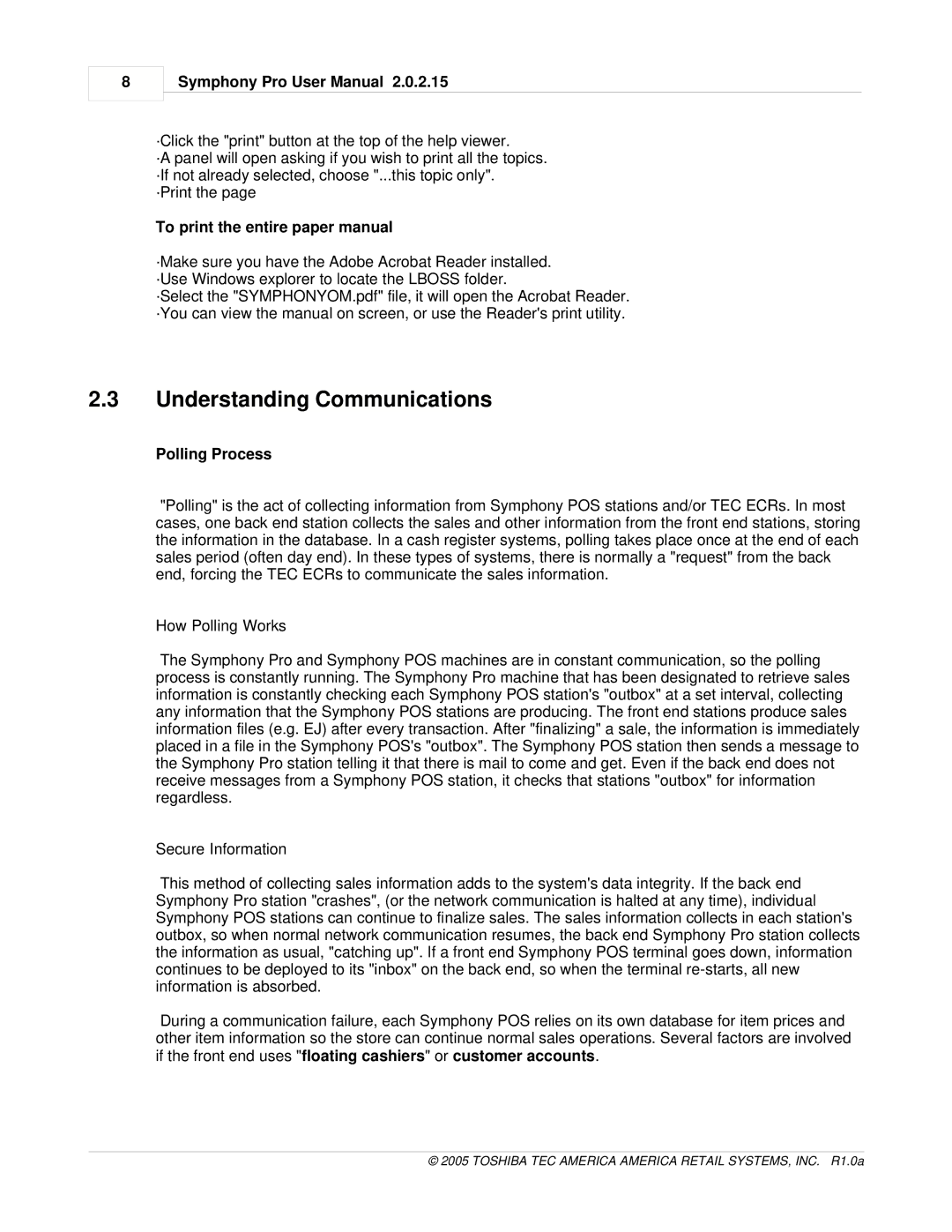
8
Symphony Pro User Manual 2.0.2.15
·Click the "print" button at the top of the help viewer.
·A panel will open asking if you wish to print all the topics. ·If not already selected, choose "...this topic only".
·Print the page
To print the entire paper manual
·Make sure you have the Adobe Acrobat Reader installed. ·Use Windows explorer to locate the LBOSS folder.
·Select the "SYMPHONYOM.pdf" file, it will open the Acrobat Reader. ·You can view the manual on screen, or use the Reader's print utility.
2.3Understanding Communications
Polling Process
"Polling" is the act of collecting information from Symphony POS stations and/or TEC ECRs. In most cases, one back end station collects the sales and other information from the front end stations, storing the information in the database. In a cash register systems, polling takes place once at the end of each sales period (often day end). In these types of systems, there is normally a "request" from the back end, forcing the TEC ECRs to communicate the sales information.
How Polling Works
The Symphony Pro and Symphony POS machines are in constant communication, so the polling process is constantly running. The Symphony Pro machine that has been designated to retrieve sales information is constantly checking each Symphony POS station's "outbox" at a set interval, collecting any information that the Symphony POS stations are producing. The front end stations produce sales information files (e.g. EJ) after every transaction. After "finalizing" a sale, the information is immediately placed in a file in the Symphony POS's "outbox". The Symphony POS station then sends a message to the Symphony Pro station telling it that there is mail to come and get. Even if the back end does not receive messages from a Symphony POS station, it checks that stations "outbox" for information regardless.
Secure Information
This method of collecting sales information adds to the system's data integrity. If the back end Symphony Pro station "crashes", (or the network communication is halted at any time), individual Symphony POS stations can continue to finalize sales. The sales information collects in each station's outbox, so when normal network communication resumes, the back end Symphony Pro station collects the information as usual, "catching up". If a front end Symphony POS terminal goes down, information continues to be deployed to its "inbox" on the back end, so when the terminal
During a communication failure, each Symphony POS relies on its own database for item prices and other item information so the store can continue normal sales operations. Several factors are involved if the front end uses "floating cashiers" or customer accounts.
© 2005 TOSHIBA TEC AMERICA AMERICA RETAIL SYSTEMS, INC. R1.0a
